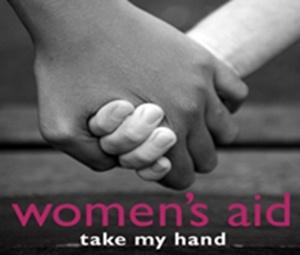The pain of domestic abuse felt by women and men

In the first of a two part series, an overview is taken of the devastating impact of domestic abuse in Irish life. By Justin Frewen.
It is only in the last couple of decades that the world has focused on the horrific levels of violence perpetrated against women in times of war. Although women and girls have been the victims of sexual violence and other forms of aggression for several millennia, their plight has generally been relegated to the footnotes of historical accounts.
However, the appalling accounts emerging from conflicts over the past 20 years has brought the horrors of this abuse to global attention. Surveys carried out in Rwanda in 1999, four years after the 1994 genocide, revealed that 39% of women reported having been raped with 72% claiming they knew someone who had been raped. In former Yugoslavia, it was estimated that at least 20,000 women were sexually assaulted.
Domestic Abuse in Ireland
These are extremely disturbing and distressing statistics and warrant serious international attention and action. However, women are subject to violence, sexual assault and abuse in non-conflict zones also. The situation in Ireland clearly illustrates the extent of unwarranted abuse women are subjected to in everyday life. Most worryingly of all, this abuse is frequently perpetuated by their partner.
For most people, their home is a place of refuge. Leaving the cares of daily life and work behind they are able to relax secure in their own personal living space. However, for tens of thousands of women around Ireland, this haven has been destroyed by their partner.
As many as 1 in 5 Irish women have been the victim of domestic violence by their current or former partner or spouse. This figure includes only reported cases. It has been estimated that a woman will be assaulted on average 35 times before contacting the police.
The high incidence of domestic violence means we all probably know someone who has been subjected to such violence. However, it is also most likely that we are unaware of her situation.
Forms of Domestic Abuse
Domestic abuse takes a number of forms:
- Physical Abuse
Being punched, hit, shoved, kicked, beaten, and assaulted with or without weapons, choking and strangulation and being stabbed.
- Sexual Abuse
Rape or being forced to engage in certain objectionable sexual acts, being obliged to look at sexually explicit material and prevented from using contraception.
- Emotional Abuse
Being shouted at and intimidated, having one's freedom curtailed, assaults on one's property and pets and being subject to threats on one's safety or life.
- Financial Abuse
Abuser refuses to pay bills, confiscates victim's bank cards and monopolises her financial correspondence, refuses to honour court-ordered payments and refuses to allow victim use facilities such as heating.
Many women testify to finding the other forms of domestic abuse just as terrifying as physical abuse and often more damaging to their self-esteem. However, they are more difficult to identify and harder to prove. The majority of abused women suffer from more than one type of violence at the same time.
Impact of Domestic Abuse
Even pregnancy provides no sanctuary for a woman. Women are often abused during pregnancy, leading in many instances to actual or threatened miscarriages. 1 in 8 women surveyed in a Dublin maternity hospital reported having experienced domestic abuse during pregnancy. Domestic abuse also impacts negatively on children. Furthermore, children are at greater risk of being mistreated by men who abuse their female partner.
Domestic violence occurs equally across all socio-economic categories. However, the Task Force on Violence (1997) revealed that being trapped in poverty, having physical or mental difficulties or being socially excluded aggravates the impact of domestic abuse on victims.
Perpetrators tend to be deliberate, manipulative and unrelenting. Engaging in repetitive intimidation and abuse, they break down their partners, destroying their sense of self-worth and often alienating them from their family and friends.
The high level of 'stigma' and general unwillingness to seriously and openly confront the physical, mental and sexual abuse of women worsen the obstacles faced by women in leaving their partner and/or reporting their partner to the relevant authorities.
Male and Female Victims
Men too can be subject to domestic abuse and this can be a highly traumatic and devastating experience for them. It is essential that they also receive responsive service support and counselling.
While women are at far greater risk of domestic violence than men, considerable numbers of men are also abused. A National Crime Council and Economic and Social Research Institute (ESRI) report in 2005 showed that 15% of women and 6% of men had suffered domestic abuse. This translated to approximately 213,000 women and 88,000 men having been abused by their partner.
However, the severity of abuse experienced by women was greater. They ran twice the risk of being seriously injured and requiring medical treatment, and were a staggering ten times more likely to have to stay in hospital as a result.
This is part 1 of a two part series. In part 2, we will look at what can be done to tackle domestic abuse in Ireland and the crucial role an organisation such as Women's Aid plays in assisting its victims.
For further information on the reality of domestic abuse of women in Ireland, please visit Women´s Aid at http://www.womensaid.ie. Women's Aid is launching its annual report - Women's Aid National Freephone Helpline and Support Services Annual Statistics Report 2009 - on Wednesday 23rd of June as well as an updated website at www.womensaid.ie
